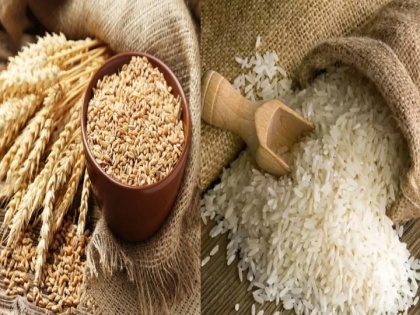Indians Eating Empty Calories? Study Finds Rice and Wheat Low in Nutrients, High in Toxins
By Lokmat English Desk | Published: January 25, 2024 03:45 PM2024-01-25T15:45:57+5:302024-01-25T15:46:31+5:30
The staple diet of millions of Indians – rice and wheat – may be surprisingly lacking in essential nutrients ...

Indians Eating Empty Calories? Study Finds Rice and Wheat Low in Nutrients, High in Toxins
The staple diet of millions of Indians – rice and wheat – may be surprisingly lacking in essential nutrients and even harboring harmful toxins, according to a new study by the Indian Council of Agricultural Research (ICAR). The findings, presented in a recent webinar hosted by Down To Earth magazine and the Centre for Science and Environment (CSE), raise concerns about the long-term nutritional security of India's population.
Nutrient Loss from High-Yielding Crops:
The study, led by ICAR soil scientist Sovan Debnath, examined the food value of modern rice and wheat varieties. It found that decades of focus on boosting yields through breeding programs have inadvertently reduced the nutrient content of these grains. Over the past 50 years, zinc and iron concentrations have plummeted by 33% and 27% in rice, and 30% and 19% in wheat, respectively.
Green Revolution's Unforeseen Consequences:
The Green Revolution, India's ambitious agricultural program launched in the 1960s, aimed to achieve food self-sufficiency by prioritizing high yields. This led breeders to prioritize factors like pest resistance and stress tolerance over nutrient uptake. As co-author Biswapati Mandal explained, "Scientists didn't have the luxury of considering nutrient absorption back then."
A Bleak Future for Food Value:
The study estimates that rice and wheat, which provide over half of the daily calorie intake for Indians, have lost up to 45% of their nutritional value in the past 50 years. This trend, if unchecked, could render these staples inadequate for human consumption by 2040, posing significant health risks related to neurological, reproductive, and musculoskeletal systems.
Arsenic Contamination Adds to Worries:
The study also revealed a disturbing rise in arsenic levels in rice, a toxic element linked to various health problems. Arsenic concentrations were found to be 1,493% higher than historical levels.
A Call for Action:
The research underscores the need for a shift in agricultural priorities, moving beyond just high yields and towards bio-fortification and nutrient-rich crop varieties. The Indian government has initiated programs to explore landraces and wild species for genes that can boost nutrient content in crops. However, as journalist Shagun pointed out, "These bio-fortified varieties are far from being widely adopted by farmers."
Open in app